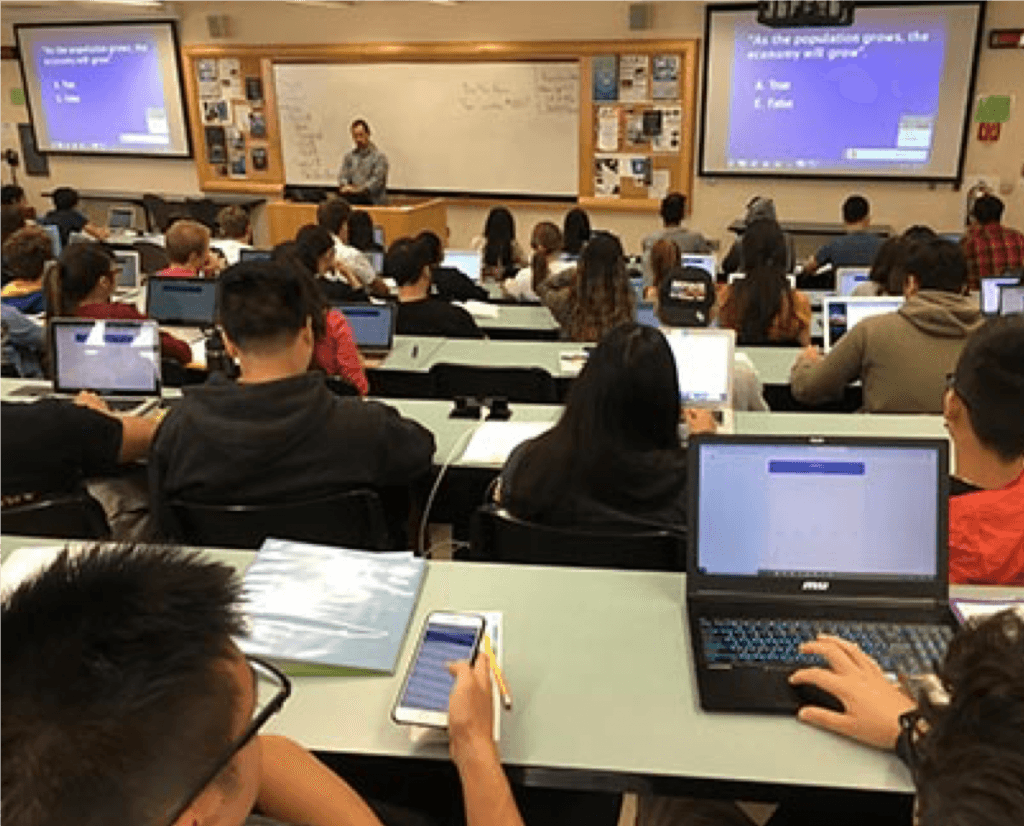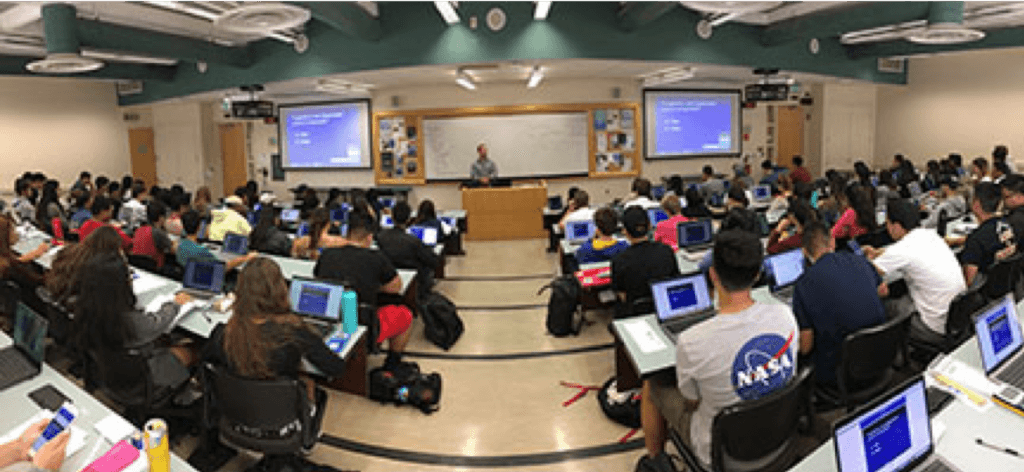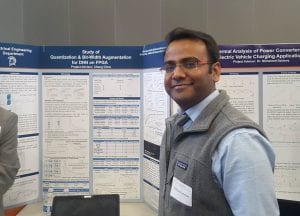The use of clickers for classroom polling continues to increase at SJSU with more than 6000 students using the student response system in their classes this semester. After collecting data from iClicker Campus analytics, Qualtrics surveys and classroom meetings with instructors, I presented results at the DET/CHE annual meeting. In longhand, that’s Directors of Educational Technology in California Higher Education (whew, good acronym).
Presenting and sharing the SJSU “clicker experience” at DET/CHE had the benefit of receiving feedback, experiences and insights from colleagues at other institutions. Although SJSU is licensed for iClicker, this presentation included an open discussion regarding a variety of student response systems with varying features, limitations and relevance.

Professor Kourosh Youssefi uses iClicker with over 500 students in his Mechanical Engineering classes.
The SJSU experience showed that iClicker:
• Supports a spectrum of disciplines.
• Supports all class sizes, from less than 25 to more than 200 students.
• Involves all student classifications from frosh through grads.
• Engages all students.
• Encourages active learning.

Students use their own devices when taking polls with iClicker in Professor Gregory Hanle’s Economics class.
Here’s a brief sample from the survey of faculty currently using iClicker in their classes:
Q: Why use iClickers?
A. To improve student interaction/participation and to assess student’s understanding of course content.
Q: How does the use of iClickers improve the classroom experience?
A. Clickers get students involved and learning and applying learning during class opposed to just taking notes and then learning the material later.
Q: How has the use of iClickers affected your teaching?
A. It helps me catch questions and confusions right away, rather than letting them linger. I can go over material again and make sure that everyone has fully understood the topic/concept before moving on.
Q: How does the use of iClickers improve your classroom experience?
A1. Class time is livelier.
A2. Motivates students to perform well.
A3. Keeps students alert and involved.
Q: What advice would you give faculty considering the use of iClickers in their class?
A1. Utilize eCampus program development staff – they are really helpful and
knowledgeable.
A2. Use it!
Using it is indeed a good way to see how well iClicker can work in your class. eCampus provides support and presents workshops. Learn more at sjsu.edu/ecampus.


 (Girivardhan Jigajinni- Top)
(Girivardhan Jigajinni- Top) 




